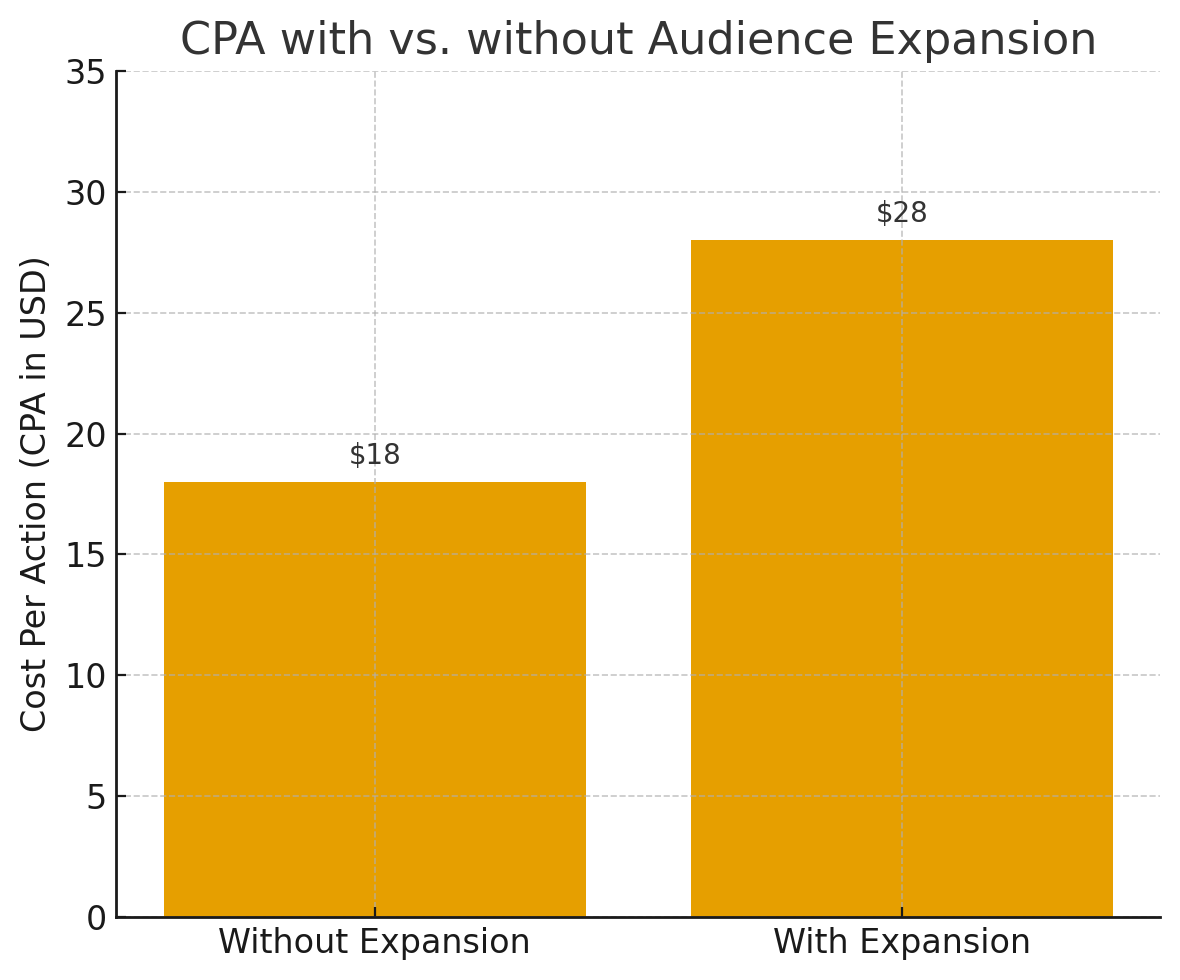It sounds great on paper: expand your audience, get more eyeballs, and drive better results. More people = more conversions, right?
Not always.
If you’ve ever turned on Advantage Detailed Targeting Expansion (or any expansion tool in Meta ads) and watched your performance nosedive — or bounce around like a yo-yo — you’re not imagining things. Audience expansion can work, but only when your offer, creative, and funnel are all ready to scale.
When they’re not? You’re just paying to test people who shouldn’t be in your funnel at all.
What Is Audience Expansion?
In Meta’s ad system, audience expansion is a setting that lets the algorithm go beyond your specified audience if it thinks it can find cheaper conversions elsewhere. This can apply to:
-
Detailed targeting expansion — allowing Meta to reach beyond selected interests, behaviors, or demographics.
-
Lookalike expansion — letting Meta find more people outside your set % match.
-
Custom audience expansion — loosening your retargeting rules to reach similar but unqualified profiles.
You’ve probably seen it in campaign options like Advantage Lookalikes or Advantage+ targeting. It sounds like smart automation — but if your core targeting isn’t rock-solid, things can go off the rails quickly.
Need a refresher on targeting foundations? Start here: Facebook Ad Targeting 101: How to Reach the Right Audience.
Why “More Reach” Often Leads to Worse Results
Audience expansion typically increases reach and impressions. That part works. The issue is what comes next: lower-quality traffic, weaker click-throughs, and spiked CPAs.

Here’s what often goes wrong:
-
Watered-down relevance. Meta starts testing users who are sort of like your audience — but not quite. They may click out of curiosity, but they don’t convert.
-
Creative mismatch. Your ad copy may be speaking to a very specific segment. Once that gets shown to a broader crowd, it doesn’t land. Results dip fast.
-
Unstable performance. Expansion triggers erratic shifts in performance that make it hard to identify what’s working. Especially if you’re still in the learning phase.
However, if you’re seeing “Ad Set May Get Zero” or “Learning Limited” warnings, expansion might be useful. See how to fix that in this article: Why You See 'Ad Set May Get Zero' on Facebook and How to Fix It.
When Expansion Hurts (And Why)

Audience expansion is risky when:
-
Your audience is already narrow and specific. If you’re targeting niche job roles, behaviors, or stages of a buyer journey, expansion breaks your precision.
-
Your ad budget is low. With smaller budgets, you want control. Expansion opens the door to wasted spend fast.
-
Your funnel isn’t optimized. New cold users from expanded audiences often need nurturing. If your funnel expects warm leads, you’ll lose them.
-
You're early in campaign testing. Expansion throws extra variables into your ad sets. That’s the last thing you need when testing messaging or formats.
Want to define the right audience before turning on expansion? Try this guide: How to Define a Target Audience for Marketing: A Step-by-Step Guide.
When Expansion Does Work
To be fair, there are situations where audience expansion performs well — but it usually depends on your campaign maturity and creative.
Here’s when it tends to help:
-
High-volume, broad offers. If you’re promoting mass-market products (like apparel, digital templates, or fitness gear), expansion helps scale faster.
-
Retargeting is maxed out. If you’ve already squeezed performance from your warm audience, expansion can be a way to find similar users who haven’t hit your funnel yet.
-
Your ads are proven performers. If CTRs are high and conversion rates are consistent, Meta’s algorithm has better signals to expand intelligently.
For a closer look at using Meta’s built-in automation features, read: Meta Ad Campaign Objectives Explained: How to Choose the Right One.
What to Do Instead of Expanding Too Soon
Instead of defaulting to audience expansion, try this three-step approach first:
1. Refine Your Core Audience
Don’t guess who your audience is — analyze who’s already converting. Use Meta’s Breakdown reports by age, location, device, and placement. Kill segments that don’t convert, and double down on the ones that do.
Want more control and specificity? Learn how to get surgical with your setup in How to Use Facebook Detailed Targeting to Reach Micro-Niche Audiences.
2. Segment Your Creative by Audience
Generic creative + broad audience = weak results. But if you tailor messaging to specific groups — for example, different versions for moms, managers, and remote workers — you’ll maintain relevance even if reach increases.
Also consider layering with interest stacking. That way, even a broad campaign stays anchored in behavioral relevance.
3. Use Retargeting First
Before expanding to strangers, make sure you’ve squeezed your warmest audiences: page engagers, video viewers, and cart abandoners. Expansion will never outperform a well-sequenced retargeting flow. Check out How to Set Up Facebook Retargeting for a step-by-step walk-through.
Final Take: Bigger Isn’t Better — Smarter Is
Audience expansion isn’t evil — it’s just often premature. It works best when your campaign already performs and you’re ready to scale. But if you’re still testing messaging or targeting, leave it off. Otherwise, you’re not optimizing — you’re guessing.
Instead of chasing more people, start by speaking better to the right ones.

